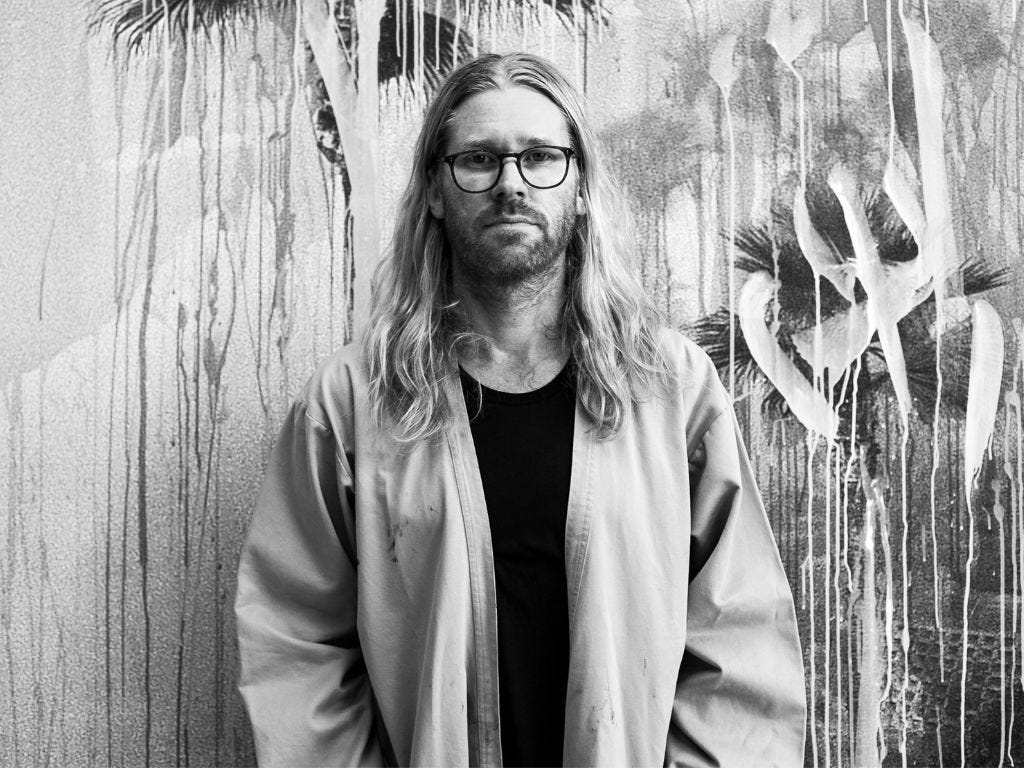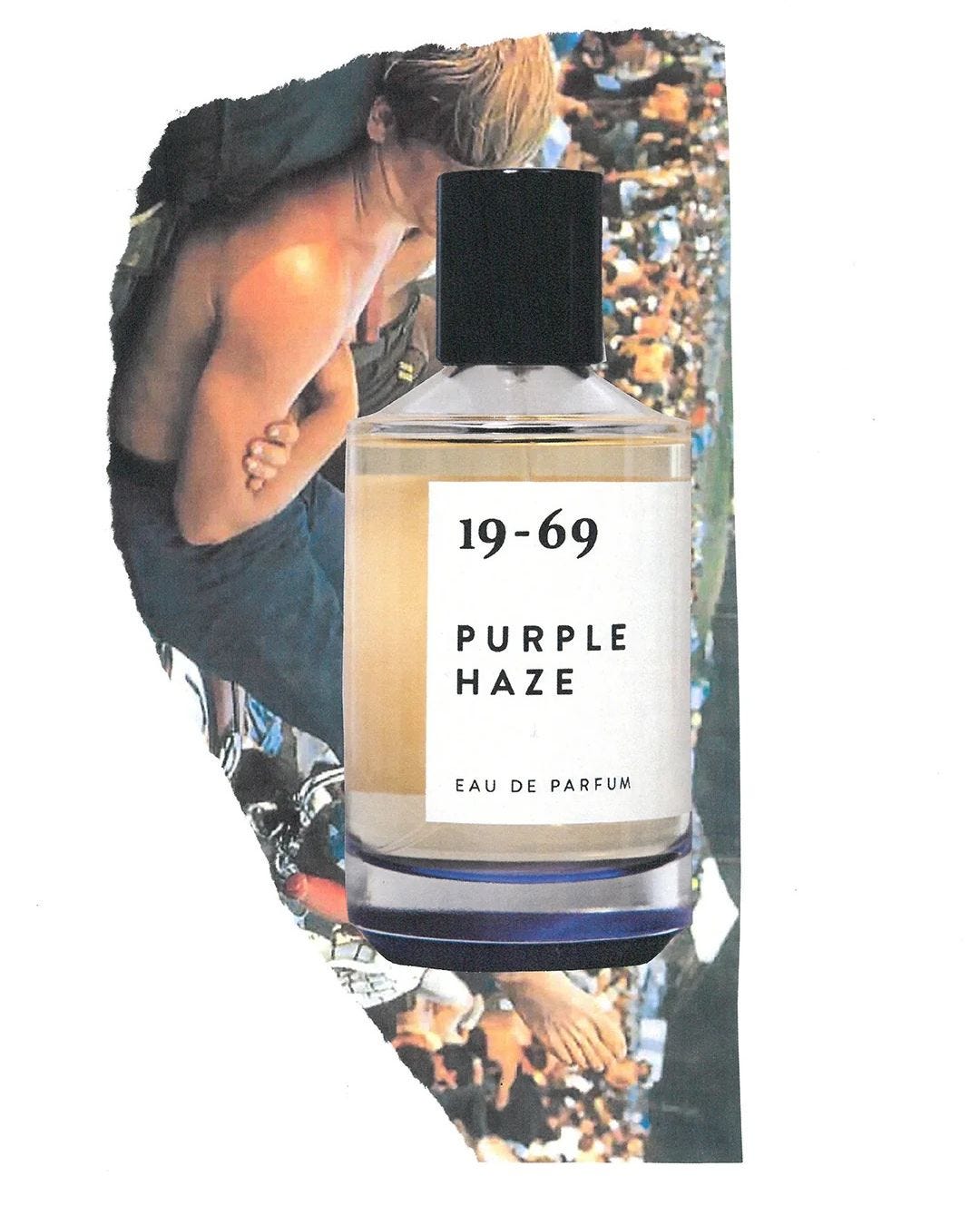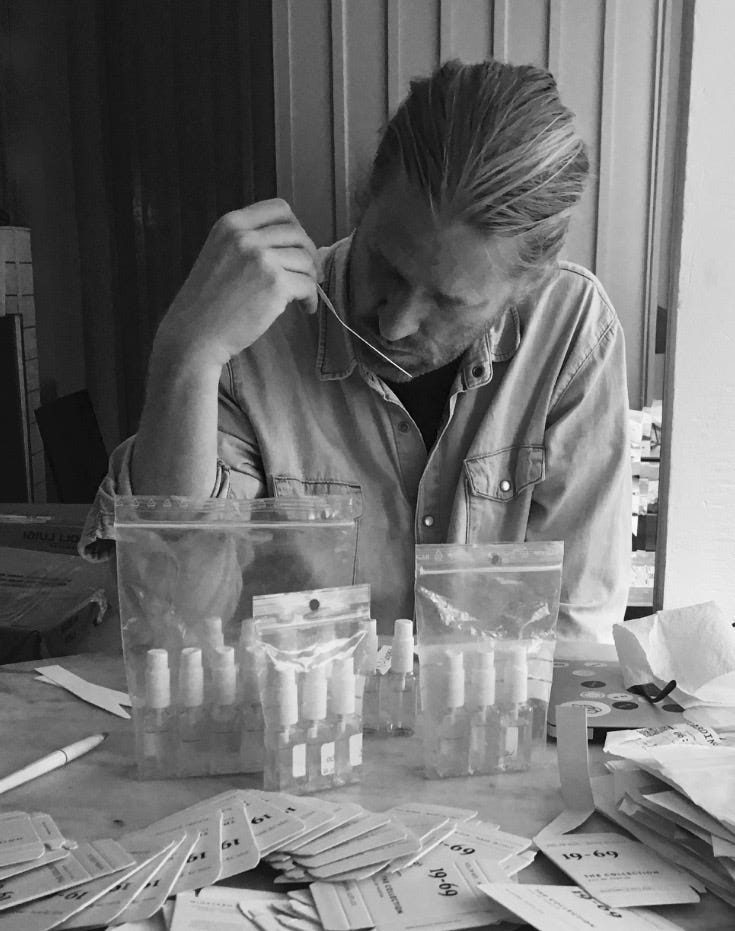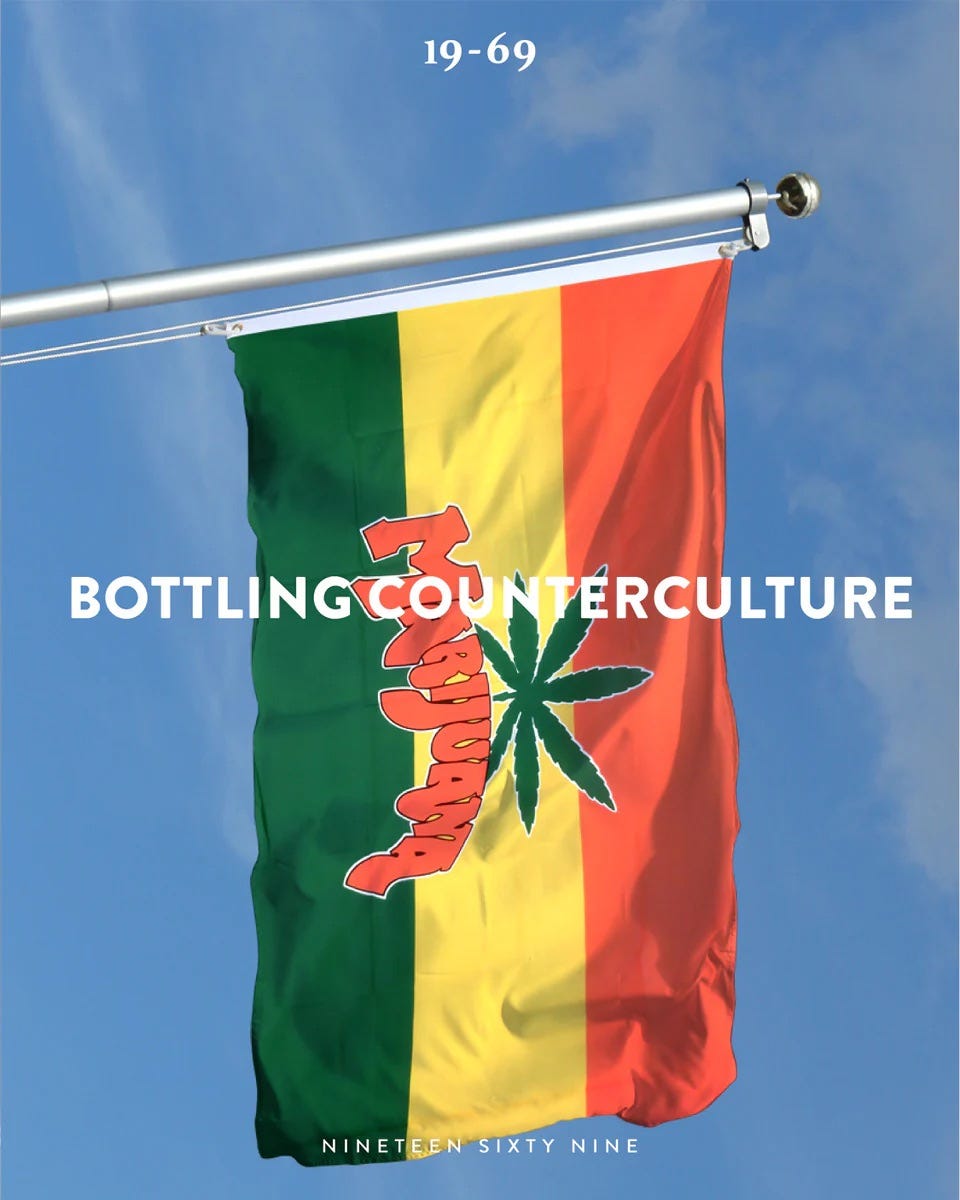Getting nosy with Swedish scentmaster Johan Bergelin
AKA the man behind counterculture-inspired perfume house, 19-69
I first discovered 19-69’s perfumes on my first trip to Gothenburg back in 2021. I was in the Swedish city with my husband to visit our friends and, as we spent the afternoon exploring the shops, we stumbled across a place on Magasinsgatan called, rather appropriately, APLACE – one of those achingly cool, impeccably curated, postage-stamp sized ‘lifestyle boutiques’ the Scandinavians do so well.
On a set of polished chrome shelves, a series of four or five sleek scent bottles caught my eye, each highlighted in a different colour that seemed to be emanating from inside the bottle itself. Of course, I sampled all of them (it would be rude not to), but found myself immediately hooked on one in particular: Purple Haze, an earthy, warm, herbaceous juice dominated by hits of cannabis, patchouli and dry cypress bark, underpinned by crisp bergamot, a cold zing of black peppercorn and powdery violet leaf. It instantly transported me back to my year abroad at UC Berkeley in Califonia, the smell of marijuana and incense sticks drifting down Telegraph Avenue as I walked back to halls from the campus at dusk. I knew I had to get in contact with the people behind the brand to find out more about their vision – although it took me three years to get organised to actually make it happen.
“I had hippie parents and grew up with values based around that,” says Swedish artist and perfumer Johan Bergelin, who co-founded 19-69 alongside his wife, Catharina, in 2017. “For me, it’s all about bottling counterculture.”
This is the starting point for all of the (gender-neutral) fragrances the house produces, each of which has a vivid backstory that places it usually in a specific location or counter cultural event across the world. Purple Haze is an homage to the creativity, freedom and liberated attitude of the Woodstock Music and Art Fair in 1969. Another standout in the collection, Female Christ – a warm, enveloping, peppery blend of cinnamon, patchouli, amber, rhubarb and pimento – was inspired by artists Bjorn Norgaard and Lene Adler Petersen’s 1969 performance piece, Female Christ, when Petersen walked naked through the Copenhagen Stock Exchange carrying a cross in an anti-capitalist protest.
Having originally launched with five perfumes at Colette in Paris, today the house has 18 olfactory offerings to its name, each with its own unique backstory and distinctive mix of notes that transport the wearer through time and space. Want to get your rave on at The Hacienda in Manchester in the 1980s or experience a photoshoot on the rain-slicked pavements of Paris with Helmut Newton in the 1970s? Well, there is a 19-69 fragrance for you (Yes Please! and L’air Barbès, respectively).
As the brand prepares to launch its first standalone shop in the heart of Milan’s most luxurious neighbourhood, I caught up with Johan over Zoom at his home in Skåne to learn more about his route into perfumery, his motivation for starting the brand and his ongoing quest to create a scent that smells like a certain tomato-based condiment.
Nick: Why is the brand called 19-69?
Johan: When it comes to architecture, music, literature, interior design, fashion, for me, 1969 really is the starting point of everything.
What are the scents that have really had an impact on you over your lifetime?
There are a few that really stand out to me. The first is Kouros by Yves Saint Laurent. Recently, I was in this laboratory in Paris for a project I’m working on and they had a huge five-litre bottle of it. Smelling it was really like a flash from the past. I remember buying it as a teenager in the same perfume shop in this small village about an hour outside of Malmo where my mum still lives. After that Joop Homme, Davidoff Cool Water and Kenzo Pour Homme. Later in life, when I came in contact with L’eau D’Issey by Issey Miyake. For me, that’s number one. I became obsessed with it – not just the superb packaging, but I had never smelled anything like it before. It was new, but there was something so familiar about it too. I think that's my ambition in my creation process now with 19-69.
What does an average day at your studio look like?
My day starts early (playing tennis, then breakfast). It’s all about creation after that. My studio is about 20 minutes from our house. I sketched about 10 drawings this morning, and I'm now at my studio sniffing and working with formulas.
What is it you love about fragrances?
I’ve always been interested in how fragrance can be a social commentary – whether that’s high culture, low culture or a combination of the two. Take, for example, my Capri fragrance. I have always been captivated by the island of Capri – the Mediterranean style of the Sixties and Seventies, Emilio Pucci, Onasis and Kennedy, yachts and Capri pants, sunshine and endless blue sea, incredible architecture like Villa Malaparte. All of those things inspired my creation of the fragrance, but that could be totally different for someone else. That really intrigues me.
Why was it important for you to start 19-69 and what is the niche that you saw missing in the current fragrance market that you could fill?
The thing is with setting up this brand is the market doesn’t need a new perfume house – I’ve always viewed 19-69 more as an art project, and that’s happened to turn into a business over time. When we started in 2017, we had a launch budget of 500 euros and the two of us had to work every single day for two-and-a-half years. That put a lot of strain on us, but we believed in what we were doing. We wanted to find out if we could create a brand that practised social commentary, that had real values that were just ones that a marketing department comes up with. That motivated me to keep going.
What’s your background as a perfumer and how has that shaped your working process?
I dropped out of school at 15, so I'm self taught. I just think it would be impossible for me to do a ‘normal’ job that didn’t have creativity at its heart. I think it’s interesting that a lot of the people who work across 19-69 are people who have left school too – and they’re all creative in their respective fields.
What would you say is your signature as a perfumer?
I'm obsessed with top notes, because that's the entry point – that’s the instant hit. So I have recently been experimenting a bit by cutting down the maceration process. When you smell a fragrance, it tends to have opening notes that develop into mid notes and then base notes over about an hour. However, top notes have much less longevity on the skin than base notes do, so this means you’d need to spray it on again throughout the day. For me, that wouldn't be a problem because the scent is so amazing, but for others longevity is a really big deal.
What’s an unusual combination of notes that has surprised you at how well they work together?
Bubblegum and basil.
Have you ever tried to distil a note or create an accord that just hasn’t worked?
Yes, some things you try and they just smell nasty! Recently, I’ve been working on a ketchup fragrance. It’s a really everyday item that’s in your kitchen, but it has this amazing history. Of course, Heinz Ketchup was linked to Andy Warhol, but the original catsup sauce has its roots in China hundreds of years ago. I have been trying to create this distinctive condiment as a scent, but… let’s just say we’re not there yet! However, I like the challenge of taking something like ketchup and seeing whether it can be made into an eau de parfum at the highest level.
You are going to be opening your first physical space soon in Milan. Could you tell me a bit more about that?
When I was 16, I was living in London and I always used to be around the Covent Garden area. I loved going into the showroom of architect and designer Ron Arad’s showroom – famous for inventing the ‘Robo Chair’. His showroom was like a completely new aesthetic universe. I went in every day for, like, three months just to be in his world. The floor was made of sand, I guess because he didn't have a huge budget? But that became a huge part of the whole look of the store, right? I feel similarly about our boutique in Milan. We are in a superb location, near Ferragamo and Celine just off the Via Montenapoleone, right in the heart of luxury, but as a small brand we don’t have the kind of budgets that those big brands have. So those limitations have become an integral part of the creation process of that space – but hopefully they are what will make it special.
Find out more at nineteen-sixtynine.com







